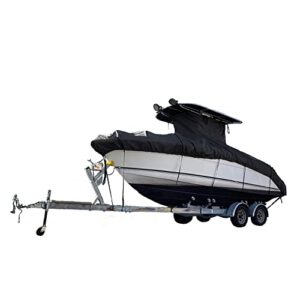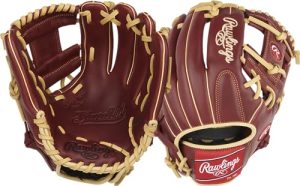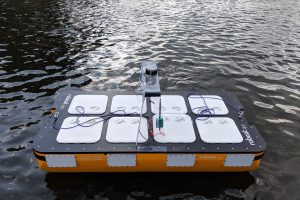Contents
The tarantula water dish is an essential accessory for ensuring proper hydration for your pet tarantula. This article will provide a comprehensive guide on the importance of a water dish for tarantulas and how to choose the right one.
You will also learn about the different types of water dishes available in the market and essential tips for maintaining a clean and safe water source for your tarantula. By understanding the significance of a water dish and following the guidelines mentioned, you can provide a healthy and thriving environment for your pet tarantula.
So, let’s dive in and explore everything you need to know about tarantula water dishes.
How Much Water Does A Tarantula Need?
A tarantula water dish is essential for providing the right amount of hydration. Tarantulas require a small water dish that is shallow, clean, and easily accessible to prevent dehydration.
Tarantulas are fascinating creatures with unique care requirements. One essential aspect of tarantula care is providing them with an appropriate water dish. Understanding how much water a tarantula needs is crucial for creating a suitable environment for these arachnids. In this section, we will explore the water requirements for tarantulas and the factors to consider when determining their water needs.
Water Requirements For Tarantulas:
- Tarantulas primarily obtain their moisture through the food they eat, so they do not require large amounts of water. Their water requirements are relatively low compared to other pets.
- A small, shallow water dish is sufficient for most tarantulas. It should be filled with clean, chlorine-free water, just enough to cover the spider’s mouthparts.
- It is crucial to use a shallow dish to prevent accidental drowning, as tarantulas are not strong swimmers. The dish should have a smooth surface, allowing easy access for the tarantula to drink from.
Factors To Consider When Determining Water Needs:
- Species: Different species of tarantulas may have varying water requirements. Researching the specific needs of your tarantula species is essential to provide adequate hydration.
- Size and age: Young tarantulas may require slightly more moisture compared to adult tarantulas. As tarantulas grow, their water needs may fluctuate. Pay attention to any changes in behavior or appearance to adjust their water supply accordingly.
- Environment: The humidity levels in the tarantula’s enclosure can affect their water requirements. If the humidity is consistently high, the tarantula may require less supplemental water. Conversely, if the humidity is low, offering a water dish provides an additional source of moisture.
- Misting: In some cases, misting the enclosure’s substrate can help maintain the appropriate humidity levels and indirectly provide moisture for the tarantula. However, it is essential not to make the enclosure excessively wet, as this can lead to mold or other issues.
Providing the right amount of water is crucial for the well-being of your tarantula. By understanding their water requirements and considering relevant factors, you can create a comfortable and suitable habitat for your eight-legged companion. Remember to always monitor your tarantula’s behavior and appearance for any signs of dehydration or excessive moisture.
Selecting The Right Water Dish
The ideal water dish for your tarantula should be shallow and heavy to prevent tipping. Choose a dish that is easy to clean and fits well in the enclosure.
Importance Of Choosing The Correct Size And Material
Choosing the right water dish for your tarantula is crucial for its well-being and overall health. The size and material of the water dish are two important factors to consider.
- Size: The water dish should neither be too large nor too small for your tarantula. Here’s why the correct size matters:
- To prevent accidental drowning: A dish that is too deep or large may pose a risk of your tarantula falling in and drowning.
- Facilitate easy access: Ensure the water dish is large enough for your tarantula to comfortably fit its legs in, allowing easy access for drinking.
- Material: The material of the water dish is equally important. Here’s why you should choose the right material:
- Safety: Opt for a non-toxic, sturdy material that won’t harm your tarantula if it accidentally bites or makes contact with the dish.
- Easy cleaning: Choose a water dish that is easy to clean and maintain. This will help prevent the growth of bacteria and ensure a healthy environment for your tarantula.
Features To Look For In A Tarantula Water Dish
When selecting a water dish for your tarantula, there are specific features you should consider to ensure its well-being and ease of use.
- Shallow Design: Look for a water dish with a shallow design to minimize the risk of drowning and provide easy access for your tarantula to drink from.
- Non-slip Surface: A non-slip surface on the bottom of the dish will prevent it from accidentally tipping over. This ensures stability and reduces the chances of water spillage or injuries to your tarantula.
- Smooth Edges: Avoid water dishes with sharp or rough edges that may harm your tarantula. Smooth edges help prevent injuries and make cleaning easier.
- Low Maintenance Material: Opt for a water dish made from easy-to-clean materials such as glass or ceramic. These materials are durable, non-toxic, and resistant to water staining.
- Appropriate Size: Consider the size of your tarantula when selecting a water dish. It should be big enough for your tarantula to comfortably access the water, but not so large that it takes up unnecessary space in the enclosure.
- Sturdiness: Choose a water dish that is sturdy and stable to prevent accidental spills and tip-overs which can lead to wet substrate and potential mold growth.
- Access Point: Look for a water dish with a wide access point. It should be wide enough for your tarantula to easily approach and drink from, without causing any discomfort.
Remember, a well-chosen water dish will help maintain the proper hydration levels for your tarantula, contributing to its overall health and well-being. Take the time to select the right size and material, considering the features that best suit your tarantula’s needs.
Placement Of The Water Dish
Proper placement of the water dish is crucial for tarantulas, ensuring easy access and maintaining humidity levels. Optimal positioning is near their hide or burrow, promoting hydration and overall well-being.
Ideal Location Within The Tarantula’S Habitat
Tarantulas require a strategically placed water dish within their habitat to ensure proper hydration. Here are some considerations for the ideal location of the water dish:
- Proximity to the hideout: Place the water dish near the tarantula’s hideout to make it easily accessible. This will encourage the tarantula to drink more frequently.
- Away from heat sources: Keep the water dish away from any heat sources, such as heating pads or direct sunlight. High temperatures can cause the water to evaporate quickly and lead to dehydration.
- Separate from the feeding area: Avoid placing the water dish near the feeding area to prevent any food particles from contaminating the water. Tarantulas have sensitive taste receptors, and they may refuse to drink if the water is contaminated by food.
- Easy visibility: Choose a water dish that is visually distinct and easy for the tarantula to locate. This will help ensure that your tarantula can find the water source readily.
- Stable placement: Ensure that the water dish is secure and won’t be easily tipped over. Tarantulas can be clumsy climbers, so a stable dish will minimize the risk of spills and messes in the enclosure.
- Consider the tarantula’s size: Take into account the size of your tarantula when selecting the water dish location. Smaller tarantula species may require a shallower dish, while larger species may need a deeper dish.
- Multiple water sources: If you have a larger enclosure or multiple tarantulas, consider providing multiple water dishes to ensure access for all individuals. This prevents competition for the water and ensures equal distribution throughout the enclosure.
- Easy access for cleaning: Place the water dish in an easily accessible location to allow for regular cleaning. Regular cleaning is essential to prevent the growth of harmful bacteria or mold.
Remember, providing a suitable location for the water dish is crucial for your tarantula’s well-being and hydration. Observing your tarantula’s behavior will also help you determine if any adjustments are needed to encourage water intake.

Credit: www.amazon.com
Maintaining Water Quality
Maintaining water quality for your tarantula is crucial for its overall health. Ensure a clean and suitable water dish to prevent bacteria and diseases, promoting a thriving environment for your pet tarantula.
:
Proper water quality is essential for the well-being of your tarantula. Just like humans, tarantulas need clean water to stay hydrated and maintain their overall health. In this section, we will explore the importance of clean water for tarantulas and the regular cleaning and disinfection of their water dishes.
Importance Of Clean Water For Tarantulas:
- Hydration: Tarantulas obtain most of their moisture from the air, but having access to clean water is crucial for hydration. Water helps regulate their internal temperature and ensures proper bodily functions.
- Molting: Tarantulas periodically shed their exoskeletons in a process called molting. During this time, they require increased humidity levels, and access to clean water facilitates a successful molt.
- Disease prevention: Dirty water can harbor bacteria, fungi, and other pathogens that can harm a tarantula’s health. Ensuring clean water helps reduce the risk of diseases and infections.
- Behavioral stimulation: Some tarantulas may use their water dish not only for drinking but also for grooming. Providing clean water can encourage natural behavior and improve their overall well-being.
Regular Cleaning And Disinfection Of Water Dishes:
To maintain water quality, it is essential to regularly clean and disinfect your tarantula’s water dish. Here are some guidelines to follow:
- Frequency: Clean the water dish at least once a week or more frequently if it becomes visibly dirty. Regular cleaning prevents the accumulation of waste, debris, and algae that can contaminate the water.
- Gentle cleaning: Use a soft brush or sponge to clean the water dish. Avoid using harsh chemicals or soaps, as residue can be harmful to your tarantula. Rinse the dish thoroughly with tap water before refilling.
- Disinfection: Every few weeks, disinfect the water dish to eliminate any remaining bacteria, fungi, or parasites. The simplest method is to immerse the dish in boiling water for a few minutes. Ensure the dish cools down before returning it to your tarantula’s enclosure.
- Avoid contamination: Prevent cross-contamination by using separate cleaning tools for your tarantula’s water dish and other reptile or insect enclosures. This reduces the risk of introducing harmful microbes to their environment.
By prioritizing clean water and following proper cleaning protocols, you can help ensure the health and well-being of your tarantula. Remember to monitor their water dish regularly and make adjustments as needed to maintain optimal water quality.
Encouraging Tarantula Hydration
Proper hydration is key for tarantulas’ health. Introducing a tarantula water dish is an effective way to encourage them to drink and stay hydrated, promoting their overall well-being.
Tarantula Water Dish:
Tarantulas, like all living creatures, require proper hydration to thrive and stay healthy. While some tarantulas may readily drink from a water dish, others may prefer alternative methods of getting their much-needed moisture. In this section, we will explore strategies to encourage tarantulas to drink water and alternative hydration methods for tarantulas who don’t use water dishes.
Strategies To Encourage Tarantulas To Drink Water:
- Place the water dish near the hiding spot of your tarantula: This will make it convenient for them to access the water without venturing far from their comfort zone.
- Use a shallow water dish: Tarantulas prefer shallow water sources as deep ones may lead to drowning accidents. Opt for a dish that allows them to reach the water easily without any risks.
- Keep the water dish clean: Regularly clean and refill the water dish to ensure both freshness and cleanliness. Tarantulas are more likely to drink clean and fresh water.
- Mist the enclosure: Some tarantulas may prefer to drink water droplets from the sides of the enclosure or plants. Gently misting the enclosure can provide them with an alternative source of hydration.
- Provide fresh food sources: Live prey, such as crickets or mealworms, contain moisture that tarantulas can consume while feeding. This indirect method ensures they receive proper hydration.
Alternative Hydration Methods For Tarantulas Who Don’T Use Water Dishes:
- Moisture-rich enclosures: Creating a moist environment in the tarantula’s enclosure can mimic their natural habitat and provide the necessary moisture. This can be achieved by using damp substrates, such as coconut fiber or sphagnum moss.
- Prey moisture supplementation: Offering prey items that are fed with moisture-rich food, like fruits and vegetables, can indirectly supply the tarantula with additional hydration.
- Encourage web-building: Some tarantulas build intricate webs that can trap moisture from the air. Providing suitable materials for web-building and maintaining adequate humidity levels in the enclosure can offer alternative hydration options.
- Offer direct water droplets: For tarantulas that do not gravitate towards water dishes, providing water droplets directly on a leaf or surface may entice them to drink. Use a dropper to carefully place droplets near the tarantula.
Remember, it is important to observe your tarantula’s behavior and adjust their hydration methods accordingly. By implementing these strategies and alternative hydration methods, you can ensure your tarantula stays adequately hydrated and healthy.
Monitoring Tarantula Water Intake
Monitoring the water intake of tarantulas is essential for their well-being. By using a tarantula water dish, you can easily track their hydration levels and ensure they stay healthy.
Tarantulas, like all living creatures, require water for their survival. As a tarantula owner, it is crucial to monitor your pet’s water intake to ensure its well-being. Dehydration can be detrimental to the health of your tarantula, so being aware of the signs and actively monitoring its water consumption are essential aspects of responsible pet ownership.
In this section, we will discuss the signs of dehydration in tarantulas and provide tips on how to monitor the amount of water your tarantula consumes.
Signs Of Dehydration In Tarantulas:
- Increased thirst: Notice if your tarantula appears to be drinking water more frequently than usual. This heightened thirst could indicate dehydration.
- Shriveled abdomen: A dehydrated tarantula may have a visibly shriveled or sunken abdomen. This physical change is an obvious sign of water deprivation.
- Lethargy: If your tarantula displays unusual sluggishness or lack of activity, it may be suffering from dehydration.
- Reduced appetite: Dehydration often leads to a loss of appetite in tarantulas. If you notice a significant decrease in your pet’s food consumption, it could be related to insufficient water intake.
How To Monitor The Amount Of Water Consumed By Your Tarantula:
- Use a water dish: Place a shallow water dish inside your tarantula’s enclosure. Ensure it is easily accessible and securely anchored to prevent accidental spills or drowning.
- Observe drinking behavior: Pay attention to your tarantula’s drinking habits. Note how frequently it visits the water dish and the duration of each drinking session.
- Measuring water levels: Regularly inspect the water dish to see if the water level has visibly decreased. This can give you an estimate of your tarantula’s water consumption.
- Record keeping: Maintain a log to track your tarantula’s water intake. Note the date, time, and approximate amount of water you refill in the dish. This record will help you notice any significant changes over time.
- Moisture in the enclosure: Monitor the overall humidity levels within your tarantula’s enclosure. Adequate humidity is crucial for tarantulas to prevent desiccation and aid in hydration.
Remember, each tarantula has its own unique water intake requirements, so it’s essential to monitor their specific behavior and adjust accordingly. By actively observing and managing your tarantula’s water consumption, you can help ensure its overall health and well-being.
Frequently Asked Questions On Tarantula Water Dish
Do Tarantulas Need A Water Dish?
Yes, tarantulas need a water dish for hydration as they do not get all their moisture from food.
Why Is My Tarantula In Its Water Dish?
Your tarantula may be in its water dish to regulate humidity or for hydration.
How Do You Feed Tarantulas Water?
To feed tarantulas water, provide a shallow dish of clean water in their enclosure.
How Deep Should A Tarantula Water Bowl Be?
A tarantula water bowl should be shallow, around 1-2 inches deep, to prevent drowning.
Conclusion
Providing a water dish for your tarantula is an essential part of their care routine. This small investment in a water dish can have a significant impact on their overall health and well-being. By following the guidelines outlined in this blog post, you can ensure that your tarantula has access to clean and fresh water at all times.
Remember to choose an appropriate-sized dish, keep it clean and hygienic, and place it in a location that is easily accessible for your tarantula. Regularly monitoring the water levels and refilling as necessary is crucial in ensuring that your tarantula remains hydrated.
A well-hydrated tarantula not only shows improved activity levels but also has a healthier appearance. So, don’t forget to prioritize your tarantula’s water needs and keep them comfortable and happy in their terrarium.










